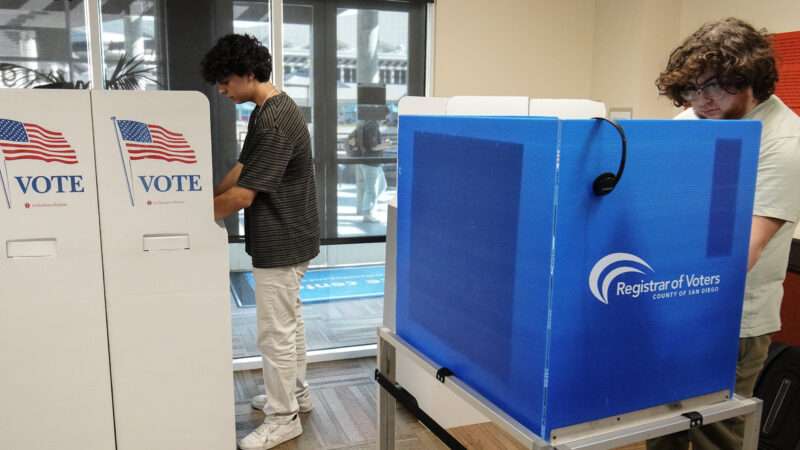
Californians have voted against increasing the state's minimum wage, despite raising that of fast food workers to $20 per hour with Assembly Bill 1228 in 2023. Of 31 minimum wage ballot initiatives since 1996, California's Proposition 32 is only the third to fail.
Proposition 32 would have raised the state's current $16 per hour minimum wage to $18 per hour for businesses employing more than 25 employees in 2025 and for those employing 25 or fewer in 2026.
One of the unintended consequences of such a staggered minimum wage increase is fewer job openings as firms would wait to employ their 26th employee. Under such a plan, the marginal cost of the 26th worker is $141,440 per year: the sum of one full-time worker paid $18 per hour plus 25 full-time workers paid $2 more per hour. Unless the marginal product of that twenty-sixth worker defies the law of diminishing marginal returns, the 25-person business delays expansion, producing less than it otherwise would. Californians' rejection of Proposition 32 averts this distortion.
Alaska has adopted Measure 1, which raises the state's current $11.73 per hour minimum wage to $13 per hour in 2025, $14 per hour in 2026, and $15 per hour in 2027. The measure also requires businesses with fewer than 15 employees to provide 40 hours of paid sick leave. Firms with more than 15 employees must provide 56 hours of paid sick leave. This fringe benefit increases the effective minimum wage by an additional 50 cents per hour, according to Geoffrey Lawrence, research director at Reason Foundation, the nonprofit that publishes this magazine.
With Proposition A, Missouri will raise its minimum wage from $12.30 per hour to $13.75 per hour in 2025, reaching $15 per hour in 2026. The proposition also requires businesses with 15 or fewer employees to provide their workers with 40 hours of paid sick leave, while those with more than 15 employees will be mandated to offer 56 hours of paid sick leave. Like Alaska, this in-kind benefit translates to an additional 50 cents per hour, according to Lawrence.
A minimum wage is only effective if the floor it sets on the price of labor is above that paid to employees. In Alaska in 2023, mean wages for food preparation and retail workers were $17.48 and $17.47, respectively. This is more than $2 per hour greater than the minimum wage set by Measure 1. In Missouri, it's the same story: The average hourly wage for food preparation and retail workers was $15.92 and $17.17 in 2023, respectively, both higher than the minimum wage set for 2026.
Few full-time workers are paid minimum wage and will not have their income directly impacted by Alaska's and Missouri's ballot initiatives. However, 3 percent of employed teenagers are paid minimum wage, according to the Bureau of Labor Statistics. Increasing the minimum wage disproportionately affects such entry-level workers, many of whom will have their hours reduced or lose their jobs entirely.
A knock-on effect impacts workers whose salaries are pegged to the minimum wage: Those who retain their jobs will enjoy higher incomes, but increasing the cost of labor will decrease employment opportunities and increase the price borne by the consumer.
California's refusal to increase the minimum wage, alongside its rejection of Proposition 33, which would have repealed bans on local rent control policies, is a victory for sound economic policy in the Golden State. Alaska and Missouri should have followed suit.
The post California Bucks Alaska and Missouri by Rejecting Minimum Wage Ballot Initiative appeared first on Reason.com.







